Tourism and modern technology have had a long-standing, symbiotic relationship. And today, the legend continues as QR codes revolutionize how we explore and experience our world. If you're often asking questions like 'How to get a QR code for travel?' or 'What are the ways a QR code can improve the tourism industry?' then you must buckle up as this article will answer all your queries.
Here, we are plunging into the world of QR codes and their massive impact on tourism.
Why You Should Use QR Codes for Tourism?
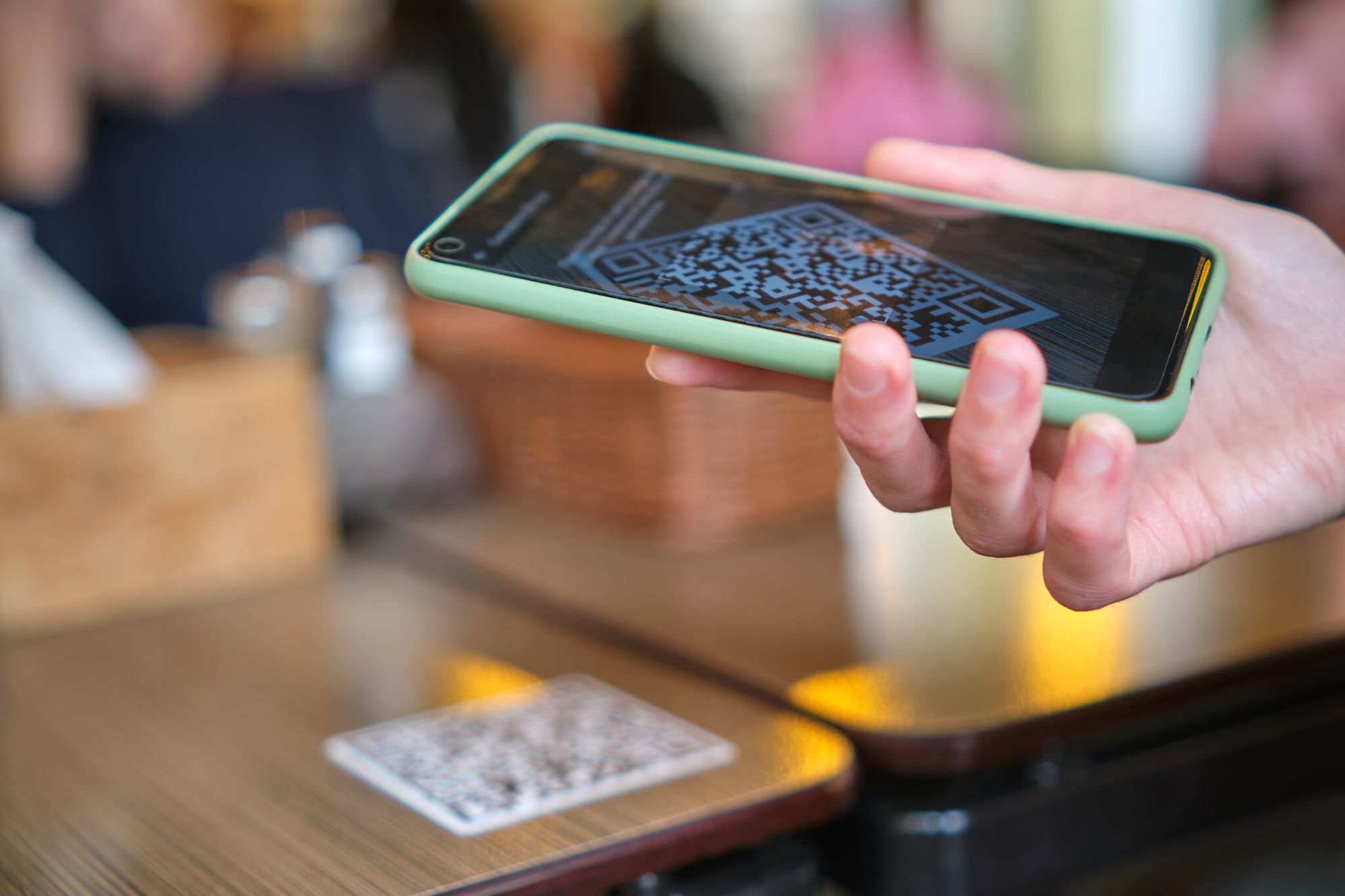
QR codes, abbreviated from Quick Response codes, are two-dimensional barcodes that store a significant amount of data.
Famously recognized for their distinctive square shape and pixelated, black-and-white design, these tiny powerhouses are altering the stereotypical boundaries of tourism. Let's illuminate how and why QR code for travel is crucial.
Convenience and Speed
In an era where speed and convenience are valued more than ever, QR codes are a godsend. Tourists can quickly scan a code using their mobile device, which then opens a link, a photo, or a text, eliminating the need for searching websites or physical guidebooks.
Versatility in Action
QR code for travel works seamlessly across various tourism platforms. Whether we talk about hotels, airlines, historical sites, or even local restaurants, they can act as a digital passport, guiding tourists in unfamiliar territories.
Engaging Visitor's Experience
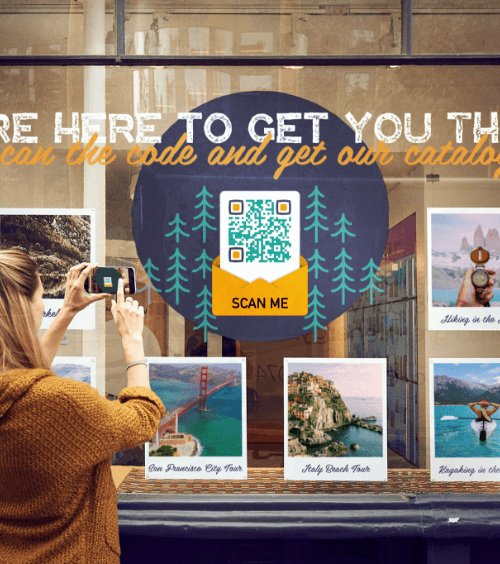
QR codes offer an interactive experience for tourists. It could be through accessing 3D views of a monument, linking to an audio guide in their language, or even looking at the menu from a restaurant in the area – the possibilities are endless.
Easy To Implement
QR codes are relatively simple and inexpensive to create and can be printed on almost anything – from ticket stubs to billboards, making it easy to incorporate into any marketing strategy.
Applications of QR Codes in the Tourism and Travel Industry
Let us delve into understanding specific applications of the QR Code in the realm of tourism. These applications are not mere implementations but solutions to problems arising and building bridges for accessibility.
Making Cities More Welcoming

QR codes can truly elevate a visitor's experience in a city by making the entire place more welcoming. How so? Imagine a traveler landing in a city, unfamiliar with the culture or even the language.
By scanning a QR code presented at the airport or the train station, they can access a city guide, understand the local modes of transportation, know about the must-visit places, and get tips on the best local foods.
They can also gain information about the city's history and culture and understand the local etiquette. The QR code for tourism hence acts as a friendly guide and makes the city appear welcoming and tourist-friendly. This is how QR codes are helping transform cities into welcoming hosts.
Helping People Who Speak Different Languages
One of the biggest challenges for international travelers is the language barrier. A city may have signboards and directions, but if they're not in a language that the traveler understands, it's of no use. But QR codes pack a punch against this issue! A single QR code can hold data in multiple languages.
Therefore, when tourists scan a QR code, they can choose the language they're comfortable with and get the required information. This feature of providing multilingual support becomes indispensable in places of interest such as museums, historic sites, and zoos.
The authentic traveler experience that QR codes offer by mitigating language barriers makes them a beloved tool in the tourism industry.
Advertising Upcoming Festivals and Community Events
QR codes are an efficient way to advertise upcoming festivals and community events to tourists. Posters of the event with a QR code can allow tourists to scan and get all the information—start time, venue, ticket price, etc. Additionally, the code could also add the event to their calendar or let them buy the tickets on the spot.
It is a brilliant way to promote local celebrations and attract tourists. Cities can embed their cultural richness through these events and foster a deeper connection with travelers. QR codes for tourism provide access, immersion, and interaction in the city culture.
QR Codes on Hotel Displays vs. Brochures and Printed Maps
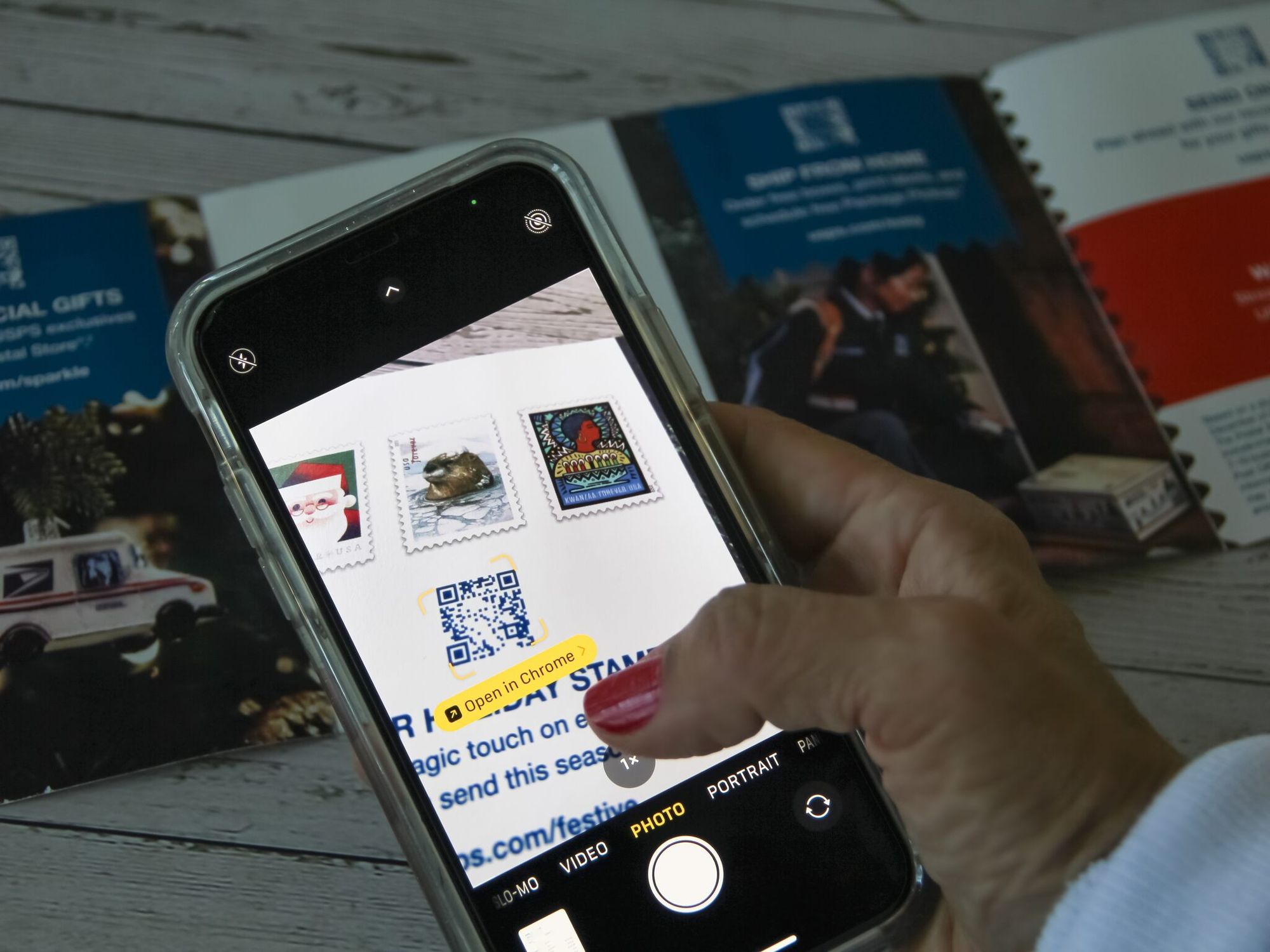
Here comes a comparison between traditional tools of tourism marketing and the modern wizard—QR codes.
Brochures and printed maps, while useful, are a one-time-use resource and can easily get lost or damaged. Moreover, updating them with the latest information is a logistical nightmare. Hotels often need to reprint these brochures to update a new tourist spot or an upcoming event, leading to increased costs, effort, and waste.
This is where the QR code's superpower comes to shine. Flash a QR code on the lobby display, and the guests can scan it to get the neighborhood map or the city guide. Not only does it save paper, but it also provides dynamic content.
The same QR code can be updated with new data, and the result will be reflected when someone scans the code next. Suppose a new restaurant opens in the neighborhood, or there is an event that the guests should know about. In that case, the hotel can update the details on the backend, and the guests will have the updated information at their fingertips. Smart, isn't it?
They are proving themselves to be a reliable and scalable tool for businesses and establishments related to tourism.
Benefits and Power of QR Codes for Travel

As we've seen thus far, the marriage of QR Codes and tourism is one that innovates, inspires, and impacts, creating exceptional travel experiences. However, the list of advantages doesn't end here. There's more to unlock and unravel about the usage of QR codes for travel.
Let's delve into the multifaceted benefits and superiority of this sophisticated technology!
QR Code Tracking and Its Advantages
One of the most significant advantages of using QR codes in the realm of travel and tourism is the tracking feature.
Each time a QR code is scanned, data is logged. This data can provide invaluable insights to businesses. By tracking QR codes, businesses can gain knowledge about the number of scans made, the location, date, and time of the scan, and even the type of device used for the scan.
Why is this important? It's simple: data is power!
Here are some of the reasons this feature is priceless:
- Understand user behavior: Businesses can understand which installations produce results and which are not. They can further identify peak scanning times and make informed decisions about their operations.
- Detailed statistics: A good QR code generator will provide businesses with easy-to-understand statistics about all the scans, enabling them to evaluate their performance and outcomes.
- Fine-tune strategies: Businesses can use the tracking data for marketing analysis, refine their strategies, optimize their promotions, and better serve the tourists.
- Enhance accessibility: The tracking feature allows businesses to identify where the QR code was scanned, thereby determining popular locations and enhancing accessibility in these areas.
Having these insights at hand, there is no denying that QR code for travel offers veritable statistics and tracking advantages, helping businesses carve out better strategies and offering a valuable return on investment.
GPS-Based Features of QR Codes
The role of QR codes in enhancing the tourists' navigational experiences from one attraction to another cannot be ignored.
How does this work? Businesses can embed GPS location into the QR code by using location QR codes.
After scanning, this feature then redirects tourists to the spot's location on a map application.
It saves precious time and eliminates the frustration of getting lost, thus making their visit more enjoyable. Whether it is about finding the entrance to a walking trail in a national park or locating the ticket counter in a busy touristic site, GPS-enabled QR codes are the tool for hassle-free navigation in tourism.
QR Codes for A Sustainable and Cost-Efficient Solution
QR code is an empowering tool that promotes paperless tourism. As we know, sustainable travel is gaining momentum across the globe, and QR codes are an innovative way to contribute to the cause. By replacing paper brochures or guides with QR codes, we are reducing litter and saving trees, all while providing accessible and convenient information to tourists.
Such transformation strikes two birds with one stone – it boosts businesses' image as eco-friendly entities and also significantly reduces printing costs, hence revealing it as a cost-efficient solution. The digital feature of QR codes converts one-time-use resources into multiple-use tools, thus promoting sustainability as well as cost-effectiveness in the travel industry.
The Wide Data Storage Capacity of QR Codes
If you're wondering why QR codes have outshined conventional barcodes, it's because they provide vast data storage capacity. They can store up to 3000 data characters, offering much room for information. Think about all the text, website links, video links, images, and interactive content you can pack in one small code!
Tourist attractions, hotels, and travel companies can utilize this feature to pack knowledge, virtual tours, multi-language guides, and much more. They can share extensive information about their service, local customs, emergency contacts, or even a thoughtful greeting message, all in one QR code.
As a result, tourists get all the necessary content while businesses can provide superior services, all thanks to the large data storage capacity of QR Codes.
How to Create a QR Code for Travel?
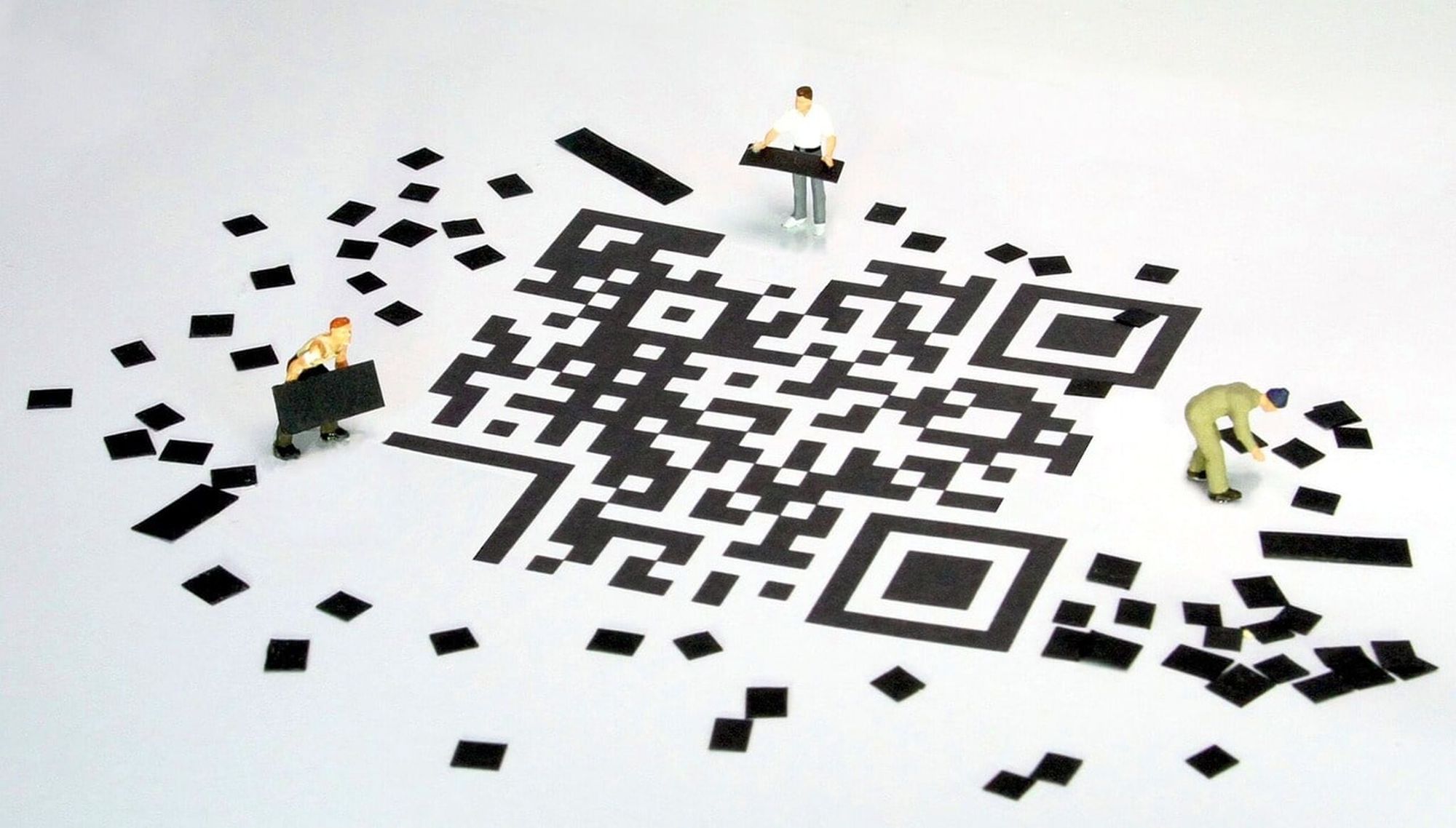
Creating a QR code for travel isn't a herculean task; it's an effortlessly simple and swift process.
In fact, it's as simple as one-two-three! So, for those of you wondering 'how to get a QR code for travel,' you're about to find out how. Welcome aboard the simple, step-by-step guide to creating your very own QR code for tourism right here in the convenience of your space!
Choosing the Right Type of QR Code
The first and foremost step is identifying which type of QR code best suits your needs. There are basically four types of QR codes that you could consider:
- URL QR Code: It redirects the scanner to a webpage. It's the perfect choice if your aim is to direct tourists to your business website or a particular webpage.
- Text QR Code: This kind holds and displays text that can be read upon scanning. Use it if you want to share information directly without steering the scanner to a webpage.
- Email QR Code: This type auto-generates an email to a predetermined email address when scanned. It's great for services or places where tourists might want to record feedback or queries.
- SMS QR Code: Might want to give tourists quick and easy contact? This type drafts an SMS to a specific number on scanning.
Understanding which of these codes aligns with your requirements is the stepping stone of your journey to create a QR code for travel. Pick the perfect fit and prepare for the next exciting step!
The Creation Process
Now that you've decided on the kind of QR code you need, next comes the process of creation. Here's a simple step-by-step guide to that:
- Step 1: Find a QR Code Generator: Several free QR code generators are available online. You can use QRCodeDynamic for dynamic QR codes.
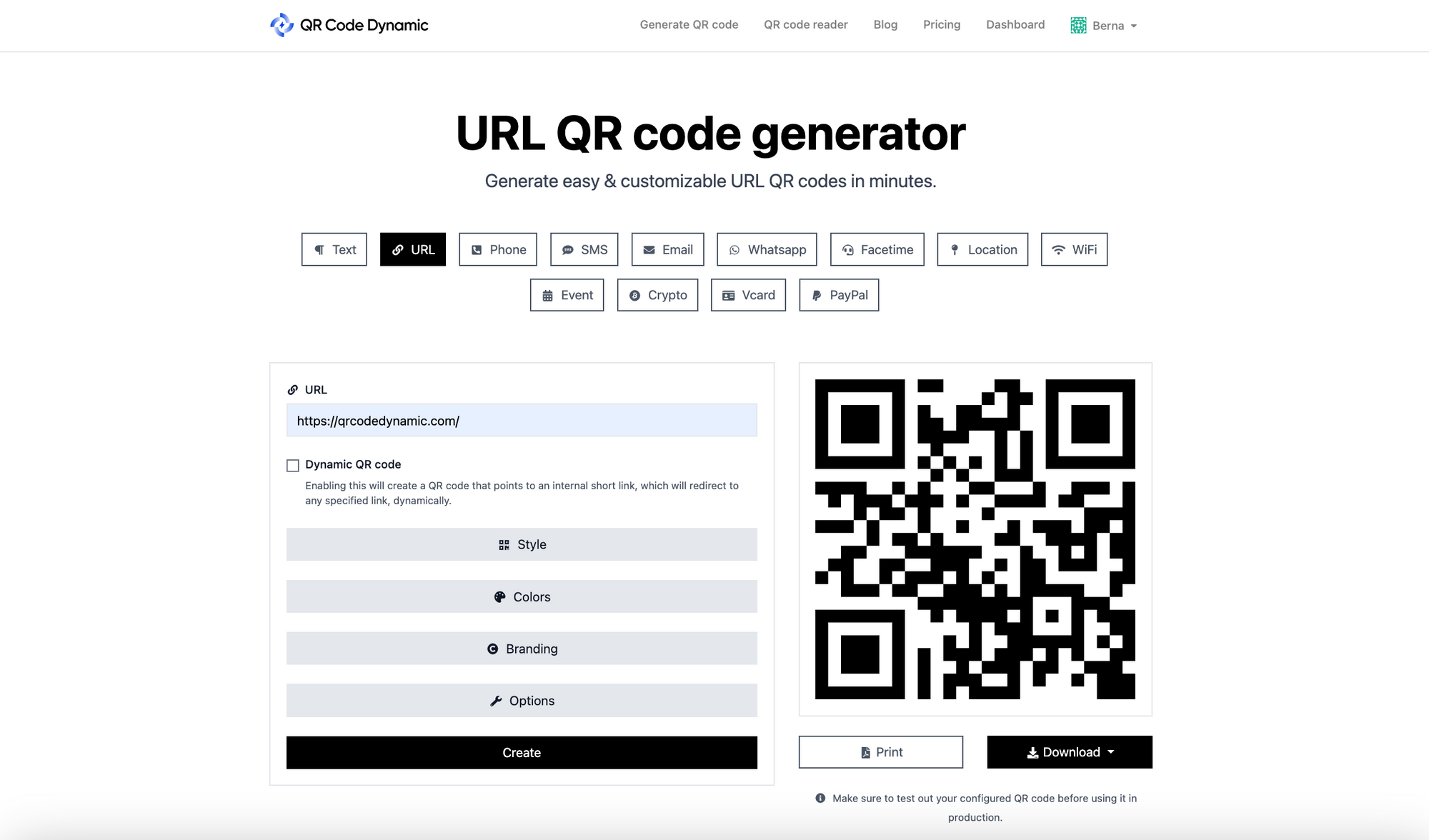
- Step 2: Enter Your Data: The next step is to enter your information. If you've chosen a URL type, enter the webpage's URL. For a text type, input the message you want to communicate. Similarly, for Email and SMS types, you'll need to specify the relevant details.
- Step 3: Generate the QR Code: Simply click on the 'Create' button. Wait for a few moments, and voila! Your QR code for tourism is ready!
Designing and Modifying The QR Code
But wait! Before you hurry to implement it, let's make this QR code aesthetically pleasing. Yes, QR codes can be customized!
- QR Code Design: The traditional black and white pattern is not a mandate. Modern QR codes can be made more appealing by adding colors that match your brand identity to gain more scans.
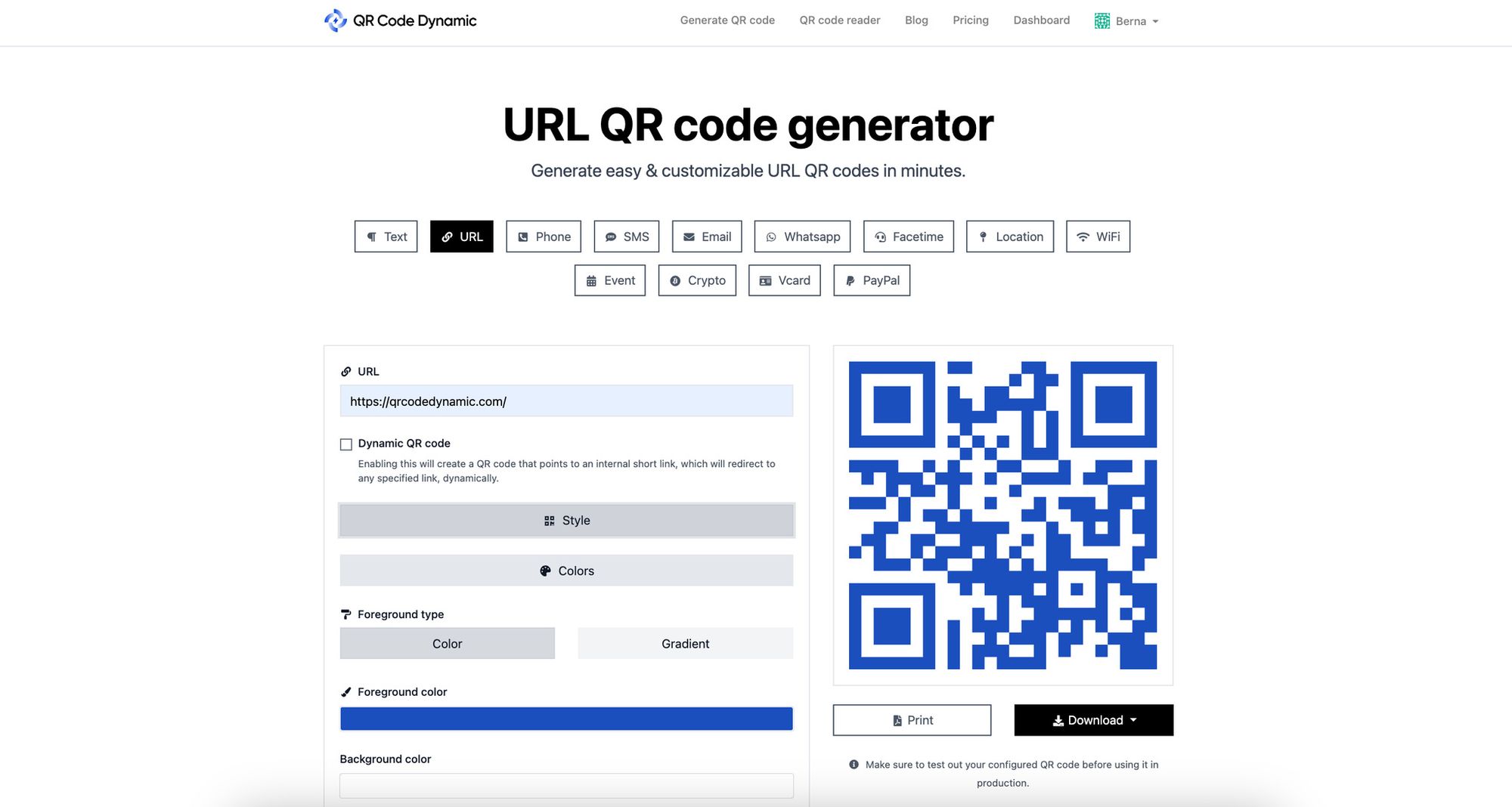
You can add your brand logo or an attractive picture right in the center of the QR code, making it more recognizable.
- Size Adjustment: Adjust the size of your QR Code, making sure it isn't too small. The larger it is, the more easily it can be scanned.
- Error Correction: QRCodeDynamic has QR code error correction levels you can set. Higher levels result in a more dense-looking QR code but allow for a reliable scan even if part of the QR Code is damaged or obscured.
Testing and Implementing the QR Code
Your created QR code is ready for a roll-out. But hold on! Before you print it on brochures, display it on your website, or publicize it anywhere else, consider the following steps.
- Test the Code: The last thing you'd want is a non-working QR code. So, make sure to test your QR code with different scanning apps and devices.
- Consider Scan Distance: When printing the code, consider where your QR will be used. If your QR code is meant to be scanned from a distance, it needs to be printed significantly larger.
- Use High Resolution: If the QR code is meant for print, ensure that you use a high-resolution file. A blurred QR code will lead to lower or no scans.
- Implement Your QR Code: Once satisfied with the functionality and appearance of your QR code, it's finally time to put that QR code into action. Add it to your tourism brochures, hotel lobbies, and places of interest, or use it as a digital calling card for your business – the sky's the limit!
Best Practices for Using QR Codes in Travel and Tourism

As QR codes continue to reshape and revolutionize the tourism sector, effectively employing these nifty tools is no longer an option but a necessity. This section will guide you through some effective practices for using QR codes in the travel and tourism industry, enabling you to leverage their full potential.
Importance of Testing the Code
After creating your QR code, you might be inclined to quickly incorporate it into your marketing materials. Hold on! Wait a minute! Have you tested your QR Code? One of the crucial steps in using a QR code effectively is ensuring it works well, which is often overlooked.
Why is this necessary?
- Efficiency: A QR code that doesn't work is not only frustrating for the user but also harms your business image. Testing ensures your QR code is scan-friendly and user-friendly.
- Perception: A functional, swift QR code projects a positive and modern image of your business. Tourists come to trust your brand and may recommend you merely on account of your sleek, seamless processes.
- Data Accuracy: Testing ensures that when scanned, the QR code provides the correct information in the right format, directing the tourists where they need to go.
Guidelines for Printing The Code
With a QR code, the world can be your canvas! There are practically no limits to where you can put them up – brochures, billboards, business cards, or even physical objects. But how do you ensure the printed code gives off its best?
Here are some guidelines:
- Size Matters: Your QR code should be of the right size – not too small that it's unscanable and not too big that it becomes an eyesore.
- Keep It Visible: Position the QR code where it's easily visible and scannable. The lower right front side of marketing material is a good location as we usually shift materials to the right.
- Quality is Key: Print your QR code in high resolution. A low-res QR code might not scan properly, and let's face it, no one likes a pixilated image!
- Opt for Dark & Light Contrast: Print the QR code in a dark color on a light background. The high contrast ensures effective scanning.
With these practices, getting your QR code printed beautifully and effectively is a cakewalk!
Tracking Analytics for QR Code

Just creating and implementing a QR code isn't the end – gathering information about its usage is equally significant. Here's why:
- Impact Analysis: QR Code analytics can gauge the impact of your QR codes. You can see how many people scanned your QR code and calculated the return on investment.
- Data Collection: Detailed statistics like the device used, location, and time of scan provide valuable insights into user behavior and preferences.
- Strategy Refinement: Periodic data analysis can help you fine-tune your marketing strategies, improve QR code placements, and offer superior services.
Therefore, tracking analytics for your QR code is a strategic move towards improving your services and success in the tourism sector.
To wrap it up, with the right practices at your disposal, using QR codes for tourism could be your game-changer. Making sure your QR code works, is printed correctly, and its analytics tracked can help you tread the path of success. So, go the extra mile, put these guidelines into practice, and watch as QR codes revolutionize your travel and tourism business.
Innovative Ways to Use a QR Code in Tourism
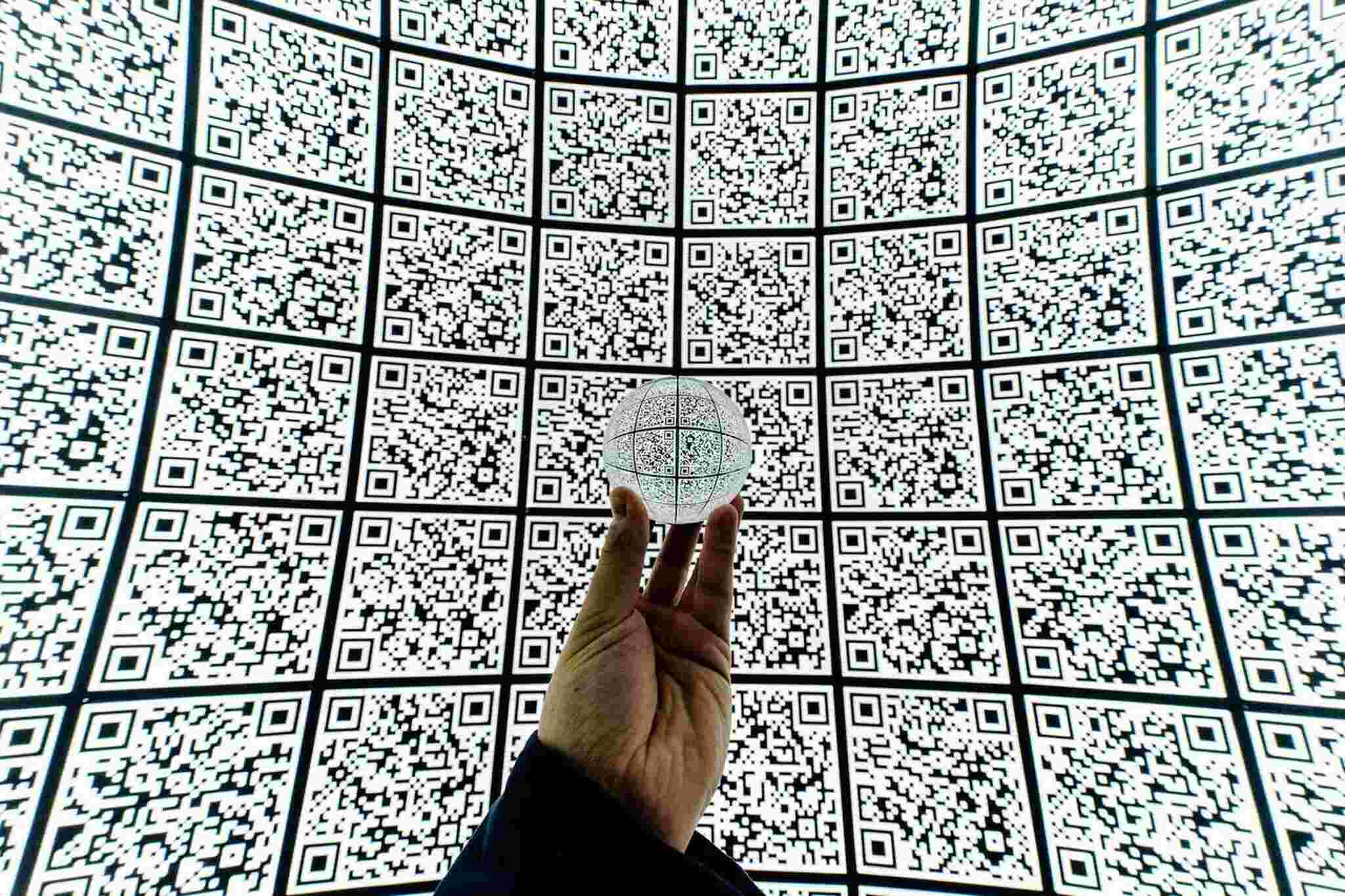
In this rapidly technological era, making travelers more engaged and encouraged is viable through integrating innovative utilities and landscapes of QR codes. Further, by dipping into more sophisticated and state-of-the-art ways to use QR codes in tourism, businesses can cultivate a unique experience, systematize operations, and scale their core functions.
QR Codes for Scavenger Hunts at Theme Parks
Think about turning your visit to the theme park into an exhilarating scavenger hunt! Theme parks can design QR code-powered scavenger hunts that participants can access by scanning codes spread throughout the park. It enhances visitors' interactivity and provides an innovative use of the QR code in tourism.
These scavenger hunts can turn into fun-filled family experiences or team-building activities, igniting interest and engagement. Not just this, participants can potentially unlock rewards or digital badges upon completion, adding an extra touch of excitement.
Promote Tourist Spots Through Images
QR codes can wield the power of beautiful visuals to magnetize tourists. Businesses can link QR codes with stunning images of various tourist spots. Seeing enticing visuals of a sun-kissed beach, a majestic skyline, or a captivating cultural market can compel tourists to scan and explore.
These image-based QR codes can be printed on brochures, flyers, and even state or city welcome signs, promoting local tourism while keeping it digital and sustainable.
QR Codes to Redirect to Important Resources
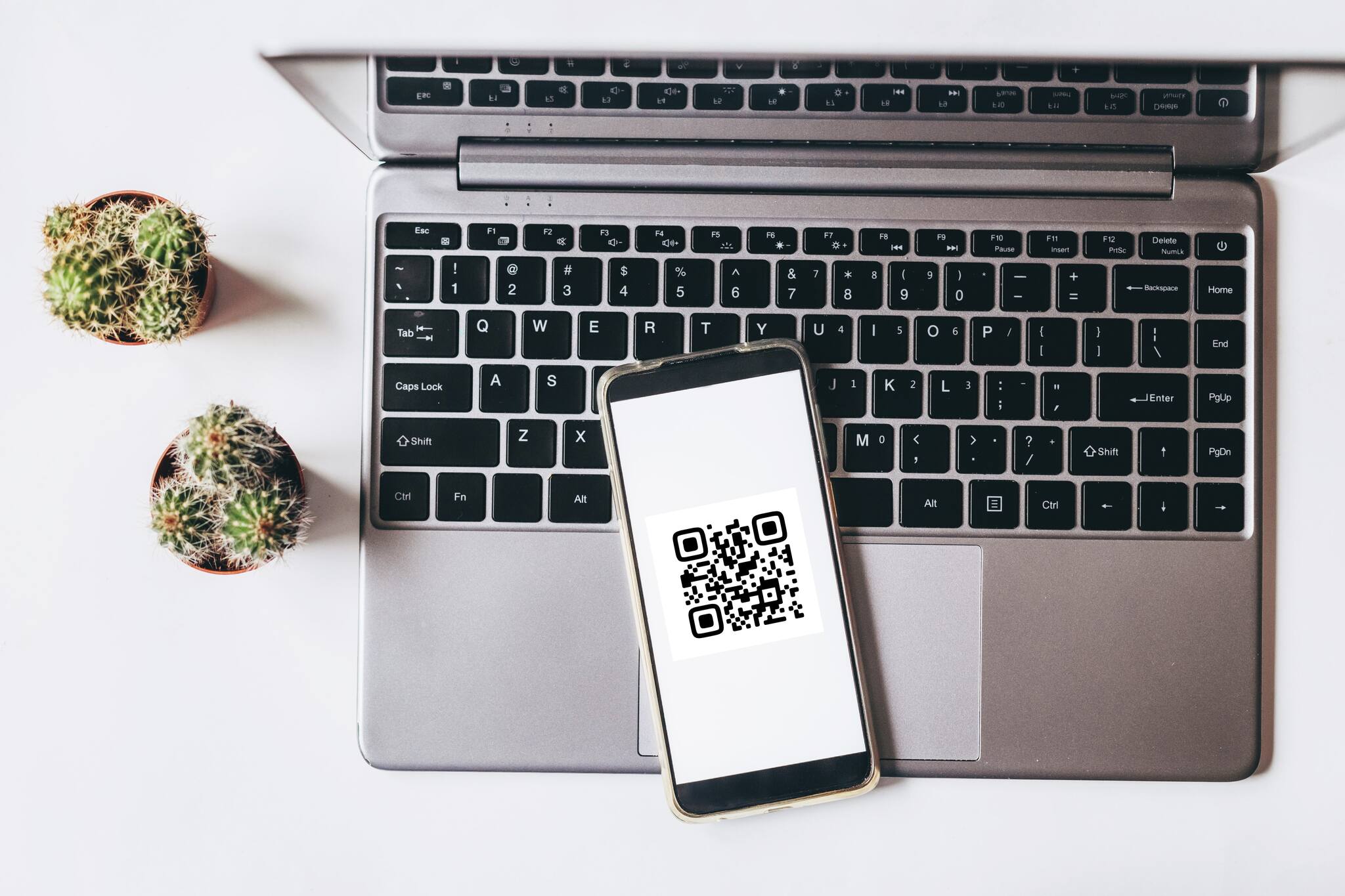
QR codes can serve as a hub of local resources for tourists. Scanning one could lead the tourists to a page with urgent and important local numbers like hospitals, police stations, and local transport services.
It could also include the dos and don'ts of the place, local customs to respect, and safety guidelines to follow. Hence, QR codes could be instrumental in offering critical, localized information at the tourist's fingertips.
QR Codes Implementation in Hotel Services

Hotels function as the home away from home for tourists and are a significant touchpoint of the traveler experience. Here are some exciting ideas to use the 'QR code for travel' to make the hotel experience seamless and engaging:
- Digital Key: Imagine a contactless entry into hotel rooms! QR codes can be set up as digital keys, letting guests unlock their rooms with a simple scan - an assurance of safety and convenience.
- In-Room Dining Experience: Hotels can attach QR codes to room service menus. Scanning these codes can lead to beautiful menu presentations with mouth-watering images and even preparation videos of dishes.
- Local Attraction Recommendations: Guiding guests about local attractions by attaching QR codes on their key card holders can be a delightful discovery for curious tourists.
- Instant Facilities Booking: Enable guests to book facilities like the spa, gym, or dining reservations by scanning QR codes. It's a great way to eliminate paperwork and long reservation queues, offering more leisure time to guests.
QR Codes for Restaurants Menus
Since dining experiences are integral to traveling, integrating QR Codes into restaurant services becomes crucial. Here are some fantastic ideas:
- Digital Menus: Providing QR codes on tables does away with fumbling through long and cumbersome paper menus.
- Interactive Menus: Imagine peeping into the kitchen while choosing what to eat! Yes, QR codes can redirect guests to videos or images of prepared dishes, helping them make informed and appetizing choices.
- Ratings and Reviews: QR Codes that lead to review sites can be used elaboratively. Happy customers can scan the code and drop a review, providing credibility and enhancing reputation.
Local Area Information via QR Codes

Give the tourists a local buddy in the form of QR codes. Here's how:
- City Guide: QR codes on city maps or local transport can provide comprehensive city guides, easing navigation and exploration for tourists.
- Historical Landmarks: QR codes placed on landmarks can offer informative snippets about their history, architectural details, and significance.
- Public Services: QR codes on public noticeboards, city centers, or tourist offices can provide access to crucial resources in the city, like emergency contact numbers, hospital locations, etc.
QR Code Use Cases in Gift Products
Turning souvenirs into mementos of unforgettable experiences is now possible with QR codes.
- Location-Specific Trivia: QR codes on fridge magnets or local craft products can have trivia or fun facts about the place. Scanning these codes can bring back cherished memories of travel adventures.
- Locally Handcrafted Products: Handcrafted products tagged with QR codes can lead consumers to videos showcasing their making process, establishing an emotional connection with the product.
- Eco Products: Eco-friendly souvenirs tied with QR codes can guide tourists to learn about the local conservation efforts, prompting them to contribute and support the cause.
QR Codes in Museums
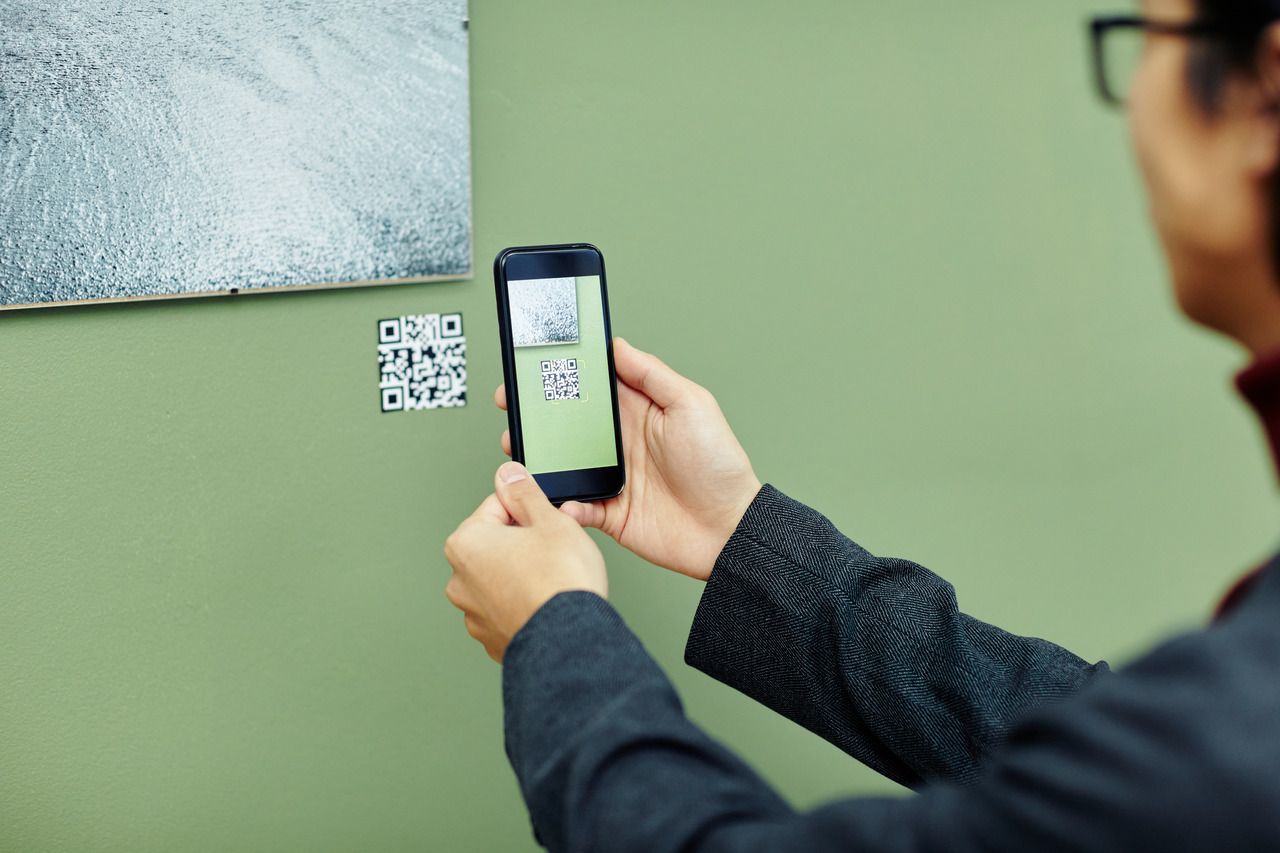
Museums are an amalgamation of culture, history, and knowledge. Sprinkle the QR code magic in it, and bam! You've got an incredible, interactive experience with QR codes for museums. Here's how:
- Interactive Displays: QR codes next to exhibits can provide much more than placard info. From videos about the exhibit's history to 360-degree views, QR codes can bring the exhibits to life.
- Audio Guides: QR codes can offer guided audio tours in multiple languages. Tourists can gain knowledge at their own pace, without missing any detail.
- Virtual Tours: In the COVID-19 era, QR codes offer a brilliant solution for virtual tours. Tourists can enjoy the museum experience without the crowd.
Conclusion
As we charter towards the end of this comprehensive guide, it's evident that we live in a digital transformation age, and QR code is steering this revolution, especially in the tourism industry.
In particular, the versatile application of QR codes in improving hotel services, creating innovative restaurant menus, enriching museum tours, enhancing local area information access, and personalizing gift products underscores their influence in the tourism industry.
Not only are they a powerful marketing weapon for businesses, but QR codes also offer a wealth of convenience and information at the users' fingertips, transforming how we travel and experience the world around us.
Moreover, using QR codes is not just beneficial in the present. The power to track and store data provides businesses with valuable insights, allowing for continuous refinement of strategies based on user behavior. Additionally, using QR codes is a step towards a more sustainable and eco-friendly future, significantly curbing the dependence on paper and making tourism more sustainable.
So, whether you're a tourism business, a marketer, an SEO expert, or simply someone looking for ways to enhance your or your respective customers' travel experiences, the adoption of QR codes is needed now more than ever. This tool is more than just a bridge between print and digital; it is the key to unlocking unlimited potential in providing unique, engaging, and richer travel experiences.
As we end this comprehensive guide on using QR codes in tourism, we hope this has enhanced your understanding of the topic, illuminating how imperative and beneficial the application of QR codes is. It's time to embrace the power of QR codes, make them an integral part of your strategic planning, and gear up to unlock a new era of enriched travel experiences.


